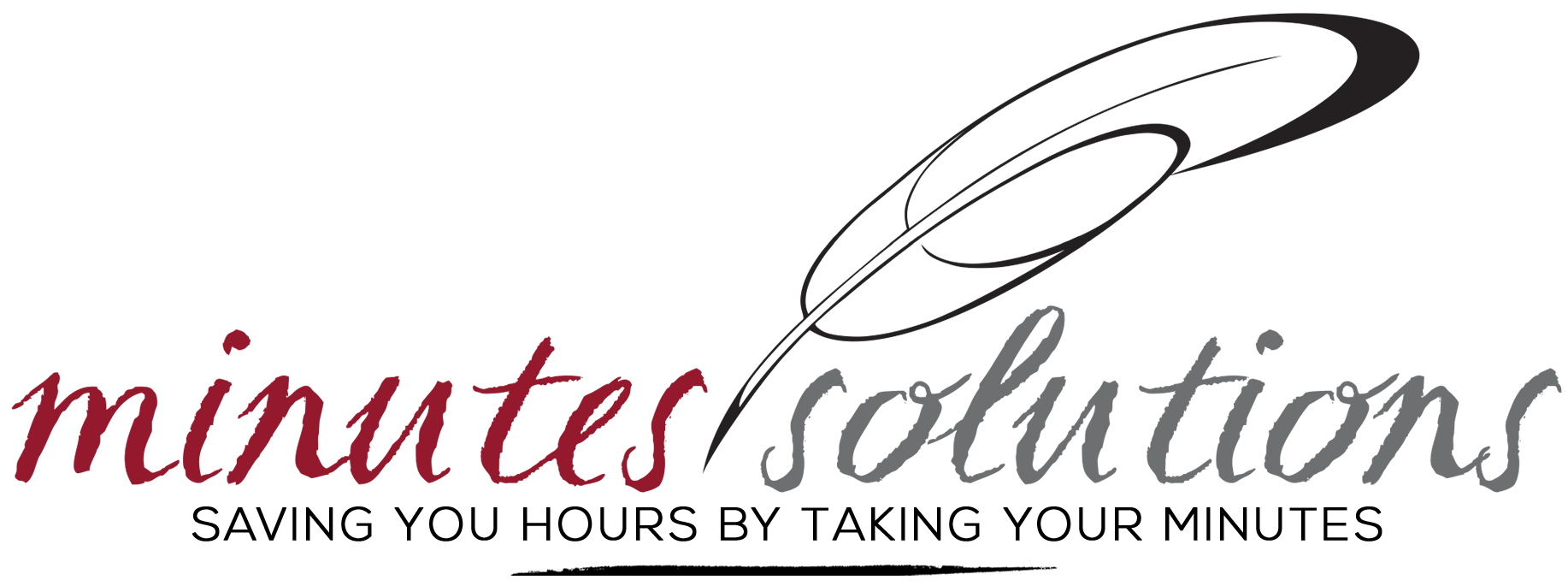In the world of board meetings, proper documentation is crucial for good governance, accountability, decision-making, and legal compliance. Two common methods for documenting a board meeting are verbatim transcription and transcribing minutes. Transcription means converting spoken language or audio recordings into written text. Each approach serves a unique purpose, offering distinct advantages and disadvantages. Let us discuss the two options.
Board Meeting Transcription: The Verbatim Record
When precision matters
What is Board Meeting Transcription?
Board meeting transcription involves the meticulous process of converting spoken words from a board meeting into a written, word-for-word transcript. This approach aims to capture every spoken word, ensuring a comprehensive record of everything discussed in the meeting. It cannot be partial, opinionated, or subjective, making it an indispensable tool in situations or industries where omitting certain conversations is not an option.
Why Transcribe a Board Meeting Verbatim?
- Precision and Accuracy: One of the primary reasons organizations opt for board meeting transcription is the need for precision and accuracy. In fields where details matter greatly, having a verbatim record of discussions, decisions, and statements is invaluable, as it leaves no room for misinterpretation.
- Legal and Compliance Requirements: Many industries operate under strict legal and regulatory frameworks. Transcribing board meetings can help organizations meet compliance requirements and provide a clear record of exactly what was said in case of disputes or audits.
- In-depth Analysis: Researchers and analysts often rely on verbatim transcripts for in-depth analysis, as it allows them to delve into the nuances of conversations, study language patterns, and identify underlying themes.
The Cons of Board Meeting Transcription
- Time-Consuming: Transcribing every word is very time-consuming, especially for lengthy meetings.
- Costly: High-precision transcription requires skilled professionals and can come at a significant cost, especially compared to transcribing minutes.
- Liability: Verbatim transcription is not typically recommended for board meetings, as this can open the board to liability in several ways, including:
- Inadvertently disclosing confidential information, such as trade secrets, confidential business strategies, or private information about individuals.
- Exposing the board to legal risks, especially if statements imply negligence, discrimination, or other lawful content.
- Inaccurate transcription may lead to misunderstandings or misinterpretations of what was discussed.
- Verbose: Verbatim transcripts often contain filler words and repetitions, which can reduce conciseness, clarity, and readability. Furthermore, they may not accurately capture the meaning the speaker intended to convey.
At Minutes Solutions, we offer “intelligent verbatim” transcription which preserves the speaker’s sentence structure, phrasing, point of view, and message but cleans up the presentation, corrects grammatical errors and misspoken words, and eliminates repetition and filler words such as “ah”, “um”, “you know”, and “like”.
Transcribing Minutes
When clarity and efficiency are key
What Are Meeting Minutes?
Meeting minutes, also known as minutes of meetings or simply minutes, offer a summarized account of key points, discussions, decisions, and action items from a meeting. Unlike verbatim transcription, minutes aim to provide a concise yet informative record, ensuring that both attendees and non-attendees can stay informed. They provide valuable context for meeting proceedings, explain the reasoning behind decisions, and serve as a convenient reference for those unable to participate in the meeting. Minutes play a crucial role in an organization’s strategic development, helping them chart their course and track their progress. They prove useful for corporations, nonprofit organizations, government agencies, school boards, and any organization looking to document a board meeting effectively.
Why Meeting Minutes?
- Clarity and Efficiency: Transcribing minutes of meetings is a time-efficient way to capture the most salient points of a discussion. It distills lengthy conversations into easily digestible information, making it suitable for most meetings.
- Action-oriented: Minutes often include action items, responsibilities, and deadlines. This actionable content makes it easier for participants to follow up on decisions made during the board meeting.
- Accessibility: Meeting minutes are user-friendly and readily accessible to a wide audience. Done well, they do not require specialized training for comprehension, making them valuable for sharing across different departments and teams, without the need to sift through extensive pages of information.
- Compliance: Proper board meeting minutes help organizations meet governance, compliance, and regulatory requirements by documenting all the necessary components of the meeting in the correct manner.
- Protection: A good minute-taker knows what to include and, equally important, what not to include in board meeting minutes, protecting the organization from the potential pitfalls of including every spoken word.
The Cons of Transcribing Minutes
- Less detail: The minutes will not capture every word spoken, which could be a disadvantage in certain contexts.
- Risk of bias: The minute taker’s interpretation may introduce bias or omit critical information when a meeting is documented in a summarized form. This concern can be addressed through the use of a professional third-party minute-taker.
- Less appropriate for highly technical discussions: In technical fields, verbatim transcripts, or at least certain sections captured word-for-word, might be necessary for precision.
Considering Digital vs. Human Transcription
When transcribing board meetings, organizations often weigh the options of digital (automated) and human transcription. Here’s why people consider both and why human transcription remains the cornerstone for accuracy and reliability:
Digital Transcription
Also, automated transcription services are typically more budget-friendly, making them an attractive choice for organizations with budget constraints. However, AI-generated transcripts often contain many errors, which can put an organization at risk of incorrectly conveying decisions, action items, discussions, and other crucial aspects of board meetings. This can also lead to a lengthy review process, negating the savings in time and money that digital transcription was intended to provide. Despite advancements in AI, automation cannot fully replace personnel trained in verbatim transcription, and certainly cannot replicate the work of a professional minute-taker.
Digital transcription utilizes technology, notably artificial intelligence (AI), machine learning algorithms, and speech recognition tools, to automatically convert audio and video recordings into text, eliminating the need for manual transcription. It offers swift transcription of board meeting minutes, which is essential when dealing with substantial volumes of audio or video content under tight deadlines.
Human Transcription:
Human transcription involves an individual converting spoken language into written text. It requires meticulous listening to audio or video recordings to transcribe the spoken words, capturing both content and context. Human transcribers can understand accents and industry-specific words, and provide additional services, such as formatting, editing, and accurate time stamping, to enhance the minutes’ usability and readability. Moreover, manual transcription services prioritize data security, often backed by non-disclosure agreements and ISO standards, ensuring utmost confidentiality for sensitive meeting content.
In board meeting scenarios, where precision and accuracy are paramount for legal compliance, decision-making, and historical reference, human transcription remains the gold standard. While automated transcription can be a valuable tool for rapid content processing, it often falls short in capturing the nuanced details and subtleties that can significantly influence the interpretation and utility of board meeting minutes.
Choosing the Right Method for Your Needs
Both word-for-word transcripts and meeting minutes have a place when it comes to how organizations keep accurate records of events and information. When deciding between board meeting transcription and transcribing minutes of meetings, consider your industry, the purpose of the documentation, and the level of detail required. Think about whether verbatim transcripts or meeting minutes will better serve your specific meeting participants and other stakeholders.
In some cases, a combination of both approaches may be appropriate, with verbatim transcription reserved for critical legal or technical contexts and minutes serving as a practical, everyday solution for most meetings. Understanding the pros and cons of each approach empowers you to make an informed decision that best serves your organization’s objectives.
How Minutes Solutions Can Help
Minutes Solutions is the global leader in professional minute-taking, offering expert minute-takers skilled in board meeting transcription and transcribing minutes from both live and recorded sessions. Our services are tailored to meet your organization’s unique needs, regardless of your industry. Our unwavering commitment to quality and precision guarantees impeccable records for your organization, whether you prefer intelligent verbatim transcripts or concise meeting minutes. Contact us today to discover how we can enhance your meeting documentation processes, providing you with the flexibility to choose the method that aligns perfectly with your organization’s objectives.

